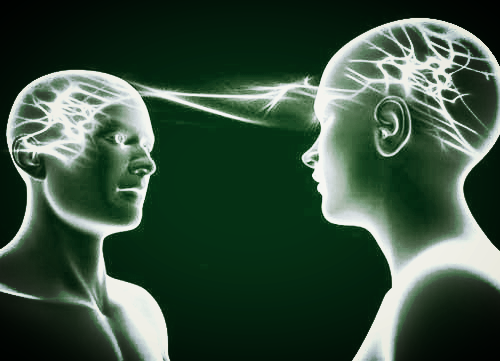Discussion Post I submitted for my Atlantic University TP6100 Course – February 11, 2020.
The primary difference between a remote viewing (R.V.) experiment and one utilizing the Ganzfeld protocol is how involved a person’s senses are during a trial. The goal of a Ganzfeld ESP experiment is to limit sensory input as much as possible. As Irwin & Watt explain, during such an experiment, “structured visual stimulation is excluded by placing a half ping-pong ball over each eye of the receiver and directing a red light at them; structured auditory stimulation is excluded by presenting electronic noise (rather like soft radio static) through headphones; and the receiver lies on a mattress or in a reclining chair so as to become habituated also to a uniform level of tactile and proprioceptive stimulation” (2007, p. 72).
In remote viewing experiments there are no such attempts to limit sensory input of the subject. As we saw in the BBC documentary assigned this week, the women subject was sitting comfortably at a conference table having a casual conversation with the man leading the experiment or her “handler” as our Mentor describes him in the assignment notes for the piece. The handler was encouraging her to draw what images came to her and he asked “questions once the viewer started getting impressions/perceptions,” as our Mentor explained in the assignment write up.
Richard Broughton describes a similar process with his description of remote viewing experiments. He said subjects are encouraged to draw sketches that come to mind of the target site in addition to jotting down any notes that spontaneously pop into their mind. He adds that since “the experimenter had no idea where the target site was, he was free to question the subject to elicit further detail. Often the experimenter had to remind the subject not to be too analytical about his or her impressions: ‘Just describe it – don’t try to figure out what it is'” (1991, p. 118).
The objects of the ESP experiments are different as well. With the Ganzfeld protocol, it’s more of a “forced-choice” experiment, although it’s not as cut and dry as the Zener Cards experiment where the subject has a 1 out of 5 chance of guessing the right card. The Ganzfeld experiments involve the elaborate modifying of the subject’s senses, as described above, and then at a designated time, as Irwin & Watts explain, “in a separate room, the sender views the target and attempts to telepathically communicate its contents to the receiver” (2007, p. 73). After the experiment time expires, the receiver then reviews four targets, one of which is that which the sender attempted to communicate, and the receiver selects the one he believes is closest to the one he envisioned. “By chance, the hit-rate should be 25 percent, but if the target is correctly identified more often than chance, this may provide evidence of ESP,” notes Irwin & Watt (2007, p. 73).
With RV experiments, there is much more freedom, and therefore they are closer to free-response experiments. As we saw in the video and experienced ourselves with our own RV experiment this week, subjects are encouraged to free-think and free-draw; to “go with what they see,” and to look at a potential site from every angle. While both the R.V. and Ganzfeld experiments can involve independent judges, in R.V. experiments, if there are judges, they are comparing the accuracy of the subject’s notes and drawings to a certain number of predetermined target locations. Broughton describes a scoring system involving a judge and 10 targets where the results came in as better than 30,000-to-one when odds against chance were calculated (1991, p. 119).
In the BBC documentary, the beacon visited 4 total sites with the drawings and notes, and it was clear that the subject’s vision was of the final site visited. It included a fountain, a statue with wings, some type of structure off the side, a path that came to a “T”, and stores in the background with one that had a red & white awning. All of which were in the notes and drawings produced earlier by the subject. When the subject arrived at the park, having never been there before, there was no doubt that this was the location she had seen in her mind’s eye.
Being able to correctly draw a site telepathically certainly has a lot more practical applications than a straight Ganzfeld experiment. This is why U.S. Intelligence Agencies were willing to provide grants for remote viewing programs like the Star Gate program, at least for a while, while Ganzfeld and other psi experiments remain wholly underfunded.
References
Auerbach, L. (2020). TP6100: “Principles of parapsychology,” week 6 assignments.
[Brian Josephson]. (2010, Dec. 06). Successful remote viewing experiment on tv [Video File]. Retrieved from https://youtu.be/nn2grEJPw70
Broughton, R. (1991). Parapsychology: the controversial science. New York, NY: Ballantine Books.
Irwin H. & Watt, C. (2007). An introduction to parapsychology. Jefferson, NC: McFarland & Company, Inc.
